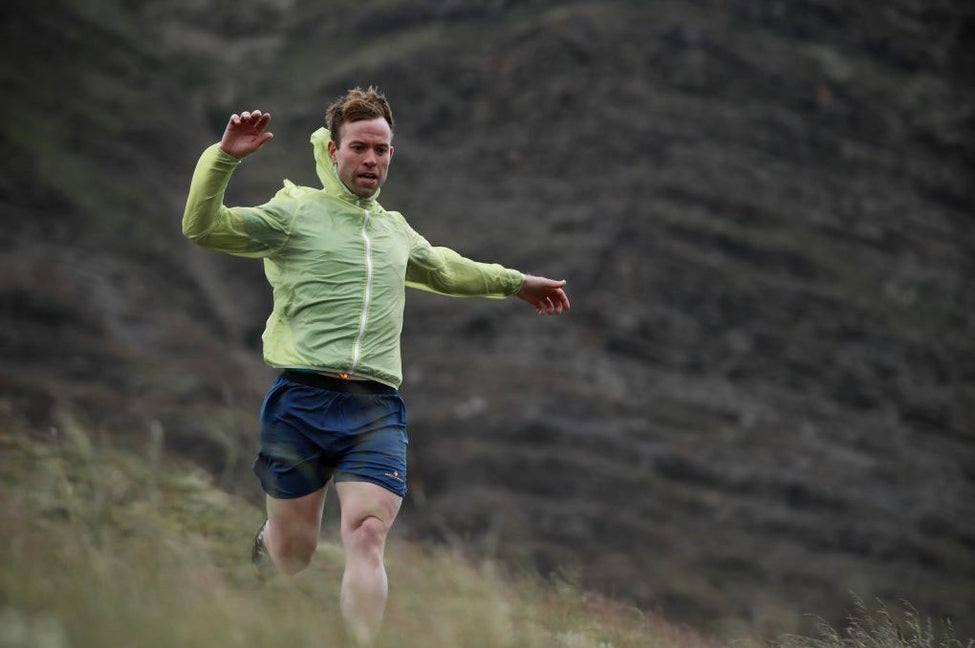Follow the Trail: A Guide to Trail Running
Many of us are on an uphill journey to better ourselves and when regular running doesn’t quite hit the spot, rugged trails might just be the answer. Its appeal is clear: many are attracted to trail running to be surrounded by beautiful views and lose themselves amongst nature. The popularity of ultra racing has boomed since 1996, seeing a 1676% increase in participants. This could be down to the enhanced sense of accomplishment that accompanies such a technical run: it tests and challenges the runner, requiring stamina, discipline and a couple of powerful legs.
Grangers sat down with Stuart Air, avid trail runner and overall adventurer, to pick up some handy tips from a seasoned professional. Stu has taken part in some impressive races, including UTMB (that passes through Italy, Switzerland and France), Tor des Géants (Italy), Hardrock 100 (Colorado) and Diagonale des Fous (Réunion Island). Trail running typically emerges from a love of road running but for Stu, the outdoors has always been the focus. He spent much of his youth climbing in the Peaks, so the surrounding rugged landscape first piqued his interest. During a climbing trip in the Alps, he discovered ultra-distance trail running and the idea of quickly covering vast swathes of technical ground appealed to him. A passion for exploration makes trail running enticing to so many people and Stu soon caught the trail running bug.
When transitioning from road to trail running, Stu stresses that the biggest difference is the unsteady terrain. Ascents and descents are unavoidable in trail running, further challenging the runner by demanding concentration to prevent injury – something you don’t need to worry about as much when running on flat, solid surfaces like roads. If you want to push yourself and give the trails a chance, practice makes perfect. Additionally, because of the varying elevation of typical trail routes, it requires a lot more planning. Stu suggests recceing the route to avoid any potential risks, such as landslips or rockfalls, and make sure to share your route with a loved one – accidents happen, so it’s best to be safe! Taking healthy snacks to boost your energy levels whilst on the trail is a must, along with a map and compass in case you get lost. Check the forecast and dress accordingly; pack layers in case of unexpected cool temperatures (you never know, especially with the British weather!).

If you’re already a keen trail runner and fancy getting involved competitively, Stu believes that training is vital when preparing for a race. He recommends replicating the route’s profile to the best of your ability, including ascents, descents and vertical gain. Not only will this get your muscles used to the slog ahead but it will make your run easier, helping to prepare your lungs and legs. Nutrition is something to plan and stick to as well. Lean protein (fish, poultry, beans, etc.), fruit and veg, healthy fats and healthy carbs should make up the diet of a long-distance runner.
Before heading out on your trail run, you need to ensure your kit is performing. Investing in comfortable, breathable technical kit is only a small part of ensuring you’re protected whilst out on the trail. Stu emphasises the importance of aftercare and its ability to restore durable water repellency (DWR) to waterproof gear to keep him safe, warm and dry. A lot of people don’t realise that waterproofs don’t stay waterproof. Dirt and general wear and tear can negatively impact an item’s DWR, preventing its ability to repel water. It’s crucial to maintain them by cleaning and reproofing. Stu swears by Grangers to treat his technical clothing. He relies on Active Wash to keep his kit fresh and Wash + Repel Clothing 2 in 1 is a Stu-staple, saving him time, energy and water by cleaning and reproofing his gear in one wash.
It may seem daunting but trail running is one of the most rewarding outdoor activities you can do, developing your body and training your mind to achieve the task at hand. Many of us are constantly challenging ourselves to go further, work harder and run faster, so when you want to level up your running game, follow the trail.

 Free shipping over £25
Free shipping over £25
